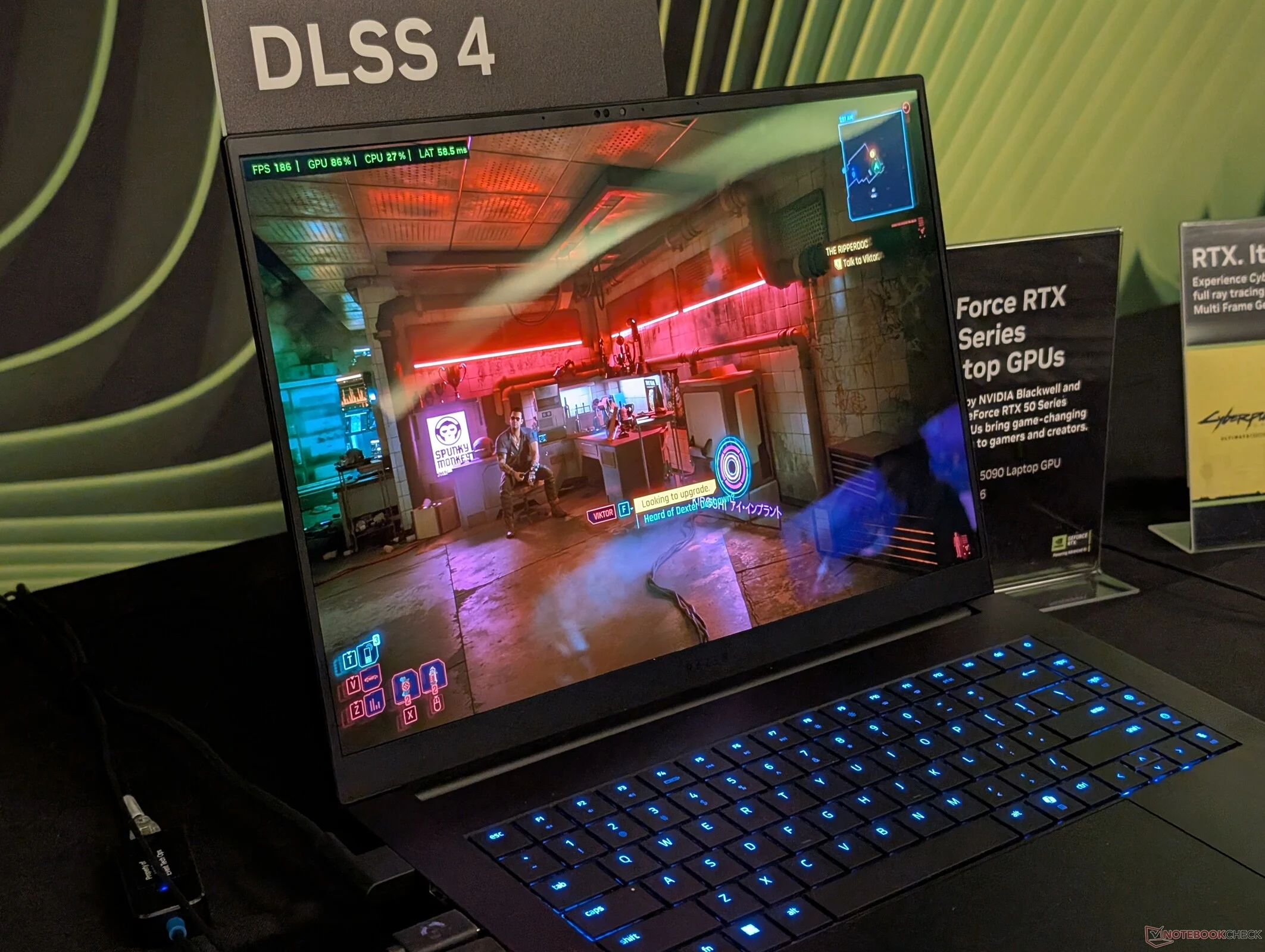Key Takeaways
1. The mobile GeForce RTX 5090 shows about 15% better performance at a peak TGP of 175 W compared to the 160 W version in the Razer Blade 16.
2. Performance gaps in gaming are larger at lower resolutions (30-50% faster at 1080p) but narrow at higher resolutions (10-5% faster at 4K).
3. The Schenker Neo 16 A25 outperforms the Razer Blade 16 in lower resolutions, suggesting potential CPU limitations in the Razer system.
4. Most users prefer higher resolutions, which may lead to disappointment with the small performance gains of the 175 W RTX 5090.
5. The mobile RTX 5090 is only half as capable as its desktop version, with limited performance enhancements for the mobile RTX 50 series.
As we keep testing the mobile GeForce RTX 5090, we’re starting to get a clearer idea of what this GPU can do at various TGP levels. The Schenker Neo 16 A25, which runs the GPU at a peak TGP of 175 W, shows about 15 percent better performance compared to the 160 W version in the Razer Blade 16, according to our 3DMark results below.
Performance in Gaming
However, when we look at actual gameplay, the performance gap seems larger at lower resolutions but narrows at higher resolutions without any upscaling techniques. For instance, our Schenker runs Monster Hunter Wilds and Cyberpunk 2077 at max 4K settings only about 10 percent and 5 percent faster, respectively, compared to the Razer system. On the flip side, at 1080p, those same games can run 30 to 50 percent faster on the Schenker, suggesting possible CPU limitations with the Razer. Most RTX 5090 users will likely prefer higher resolutions rather than lower ones, so the small performance gains with the 175 W RTX 5090 might leave some feeling a bit let down.
Comparison with Desktop GPUs
We’ve previously indicated that the mobile RTX 5090 in the Blade 16 is only half as capable as its desktop counterpart. Sadly, even the top-tier 175 W mobile GPU doesn’t significantly enhance the performance for the mobile RTX 50 series.


Leave a Reply